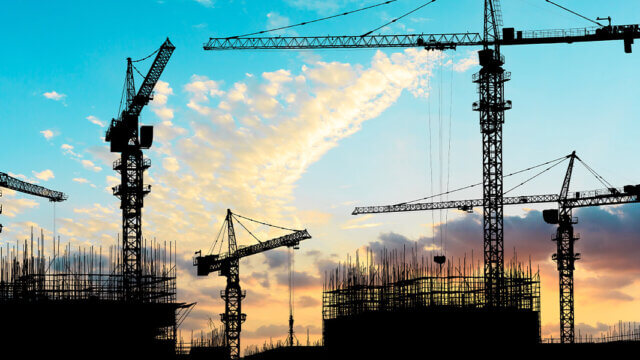PORTSMOUTH, NH—Analysts at Lodging Econometrics (LE) report that China’s total construction pipeline boomed in the fourth quarter of 2019 and closed the quarter at 3,526 projects/643,435 rooms, up 28% by projects and 11% by rooms year-over-year (YOY). At the end of 2019, both projects and rooms in the construction pipeline were at new all-time highs. China has the second largest pipeline in the world. These numbers all came before the impact of COVID-19 began.
Projects presently under construction are at 2,317 projects/411,032 rooms, up 13% by projects and down less than 1% by rooms, YOY. Projects scheduled to start construction in the next 12 months are at 763 projects/76,063 rooms, up 117% by projects and 63% by rooms, YOY. Projects in the early planning stage are up 22% and 20% YOY, standing at 446 projects/111,799 rooms. Projects starting in the next 12 months and those in early planning are both at record-high counts.
At the close of 2019, hotel development continued to thrive in China despite the world’s second largest economy beginning to show signs of deceleration. This is in part due to the two-year-long trade and tariff dispute with the U.S., which for the time being has resulted in a partial trade agreement; industrial exports growing at their slowest rate in almost 20 years; and the recent swine fever outbreak, which added an additional strain to the economy, causing an increase in the price of the country’s primary meat supply.
In 2019, China opened 1,038 new hotels/144,490 rooms, accounting for 33% of all of the new hotels that opened worldwide throughout the year. LE’s future forecast for new hotel openings continues to be robust as the record number of projects in the pipeline enter into current supply. Throughout 2020, LE anticipates 926 new hotels/129,706 rooms will open and in 2021, 992 new hotels having 141,401 rooms are expected to open.
China’s pipeline is led by Chengdu with 134 projects/27,864 rooms, a 23% increase in projects YOY. This is an all-time high for the city. Guangzhou follows with 131 projects/26,574 rooms. Next is Shanghai with 118 projects/22,432 rooms, Wuhan with 111 projects/15,242 rooms and Suzhou with 91 projects/15,332 rooms.
Franchise companies topping China’s construction pipeline are led by Hilton, at an all-time high, with 480 projects/98,628 rooms and InterContinental Hotels Group (IHG) with 369 projects/80,583 rooms. Next is Jinjiang Holdings with 342 projects/34,648 rooms, Marriott International, also at record counts, with 335 projects/92,729 rooms and Accor with 208 projects/34,372 rooms.
Hampton by Hilton has the largest hotel construction pipeline in China with 291 projects/45,220 rooms. Hilton’s second largest brand is DoubleTree with 62 projects/17,233 rooms. IHG’s major brands are Holiday Inn Express with 179 projects/31,115 rooms and Holiday Inn with 59 projects/14,885 rooms. The top brands for Jinjiang Holdings are Vienna Hotel with 156 projects/15,570 rooms and 7 Days Inn with 112 projects/8,846 rooms, while Marriott International’s leading brands are the full-service Marriott Hotels & Resorts with 77 projects/23,296 rooms and Courtyard with 40 projects/10,598 rooms. Accor has 89 Ibis brand projects/9,334 rooms and Mercure 60 projects/9,555 rooms at the top of their pipeline.
COVID-19 (the novel coronavirus) did not have an impact on fourth quarter 2019 totals reported by LE. However, in light of the recent virus outbreak, LE’s market intelligence department has and will continue to focus its research on contacting developers, ownership and management groups of open hotels, and tracking construction projects in China to accurately report how the virus is impacting labor, development and construction timelines, the company reports. Many developers it has already spoken with are optimistic and believe that the virus may cause only a slight delay. However, it is still too early to predict the full impact of the outbreak on the hospitality and lodging industry.
Further, open and operating hotels, due to low occupancy rates, and hotels that were scheduled to open in the near future, are being hit the hardest. According to LE’s research, most open economy and midscale hotels have been temporarily closed, and many 4-5-star hotels are still operating, but with limited services available. Although there is evidence that the situation is beginning to stabilize as the number of new cases reported is declining, it is likely to be a slow road back to normality and the country returning to pre-outbreak activity levels. Beijing, the country’s capital, and the Hubei province, where the virus originated are still experiencing heavy restrictions.



